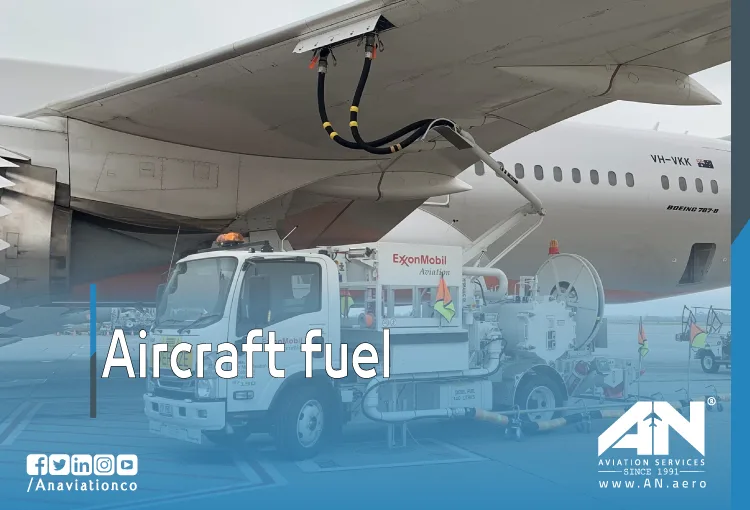
When it comes to keeping aircraft in the skies, aviation fuel is the backbone of the aviation industry. Unlike the fuel we use in our cars, aviation fuel is specially formulated to meet the unique demands of air travel, from powering jet engines to ensuring safety in extreme conditions. As the aviation industry continues to innovate and explore sustainable alternatives, understanding the types of aviation fuel in use today is key to grasping the sector’s role in global transportation and environmental sustainability.
This blog dives into the various types of aviation fuel, their unique characteristics, and the future fuels being developed to reduce greenhouse gas emissions and ensure a more sustainable aviation industry.
The Basics: What Is Aviation Fuel?
Aviation fuel is a specialized type of petroleum-based or bio-based fuel used to power aircraft engines. It is designed to meet strict safety, performance, and environmental standards. Unlike automotive fuel, aviation fuel must perform reliably in extreme altitudes and temperatures, whether it’s powering a jet engine or a smaller propeller-driven aircraft.
The aviation sector primarily uses two categories of fuel: aviation gasoline (Avgas) for piston-engine aircraft and jet fuel for turbine-engine aircraft. Each has its own composition and performance requirements, tailored to the specific needs of different types of aircraft.
The Common Types of Aviation Fuels
1. Aviation Gasoline (Avgas):
Avgas is a type of fuel designed for aircraft with piston engines, commonly found in smaller planes or general aviation. The most widely used grade is Avgas 100LL (low lead), which contains a small amount of lead to improve performance and prevent engine knock. However, the aviation industry is actively exploring unleaded alternatives to reduce the environmental impact of lead-based fuels.
2. Jet Fuel:
Jet fuel is used in turbine-powered aircraft, which includes most commercial airliners and military aircraft. It’s similar to kerosene but with stricter safety and performance specifications. The two primary types of jet fuel are:
- Jet A and Jet A-1: These fuels are widely used in commercial aviation and are kerosene-based. The difference lies in the freezing point, with Jet A-1 offering better performance in extremely cold temperatures.
- Jet B: A mixture of kerosene and gasoline, Jet B is used in cold climates due to its lower freezing point, but it’s less common than Jet A and Jet A-1.
The Shift Toward Sustainable Aviation Fuels (SAFs)
As the aviation industry works to reduce its environmental footprint, Sustainable Aviation Fuels (SAFs) have emerged as a game-changing solution. SAFs are bio-based or synthetic fuels that can reduce greenhouse gas emissions by up to 80% over their lifecycle compared to conventional jet fuel.
What Are SAFs Made Of?
SAFs are derived from renewable resources such as:
- Hydroprocessed Esters and Fatty Acids (HEFA): Made from used cooking oil, animal fats, and other waste products, HEFA is currently one of the most commercially viable SAFs.
- Alcohol-to-Jet (ATJ): This fuel is created by converting alcohol (like ethanol or butanol) into synthetic paraffinic kerosene (jet fuel).
- Fischer-Tropsch (FT) Fuels: These synthetic fuels are produced from biomass or municipal solid waste through a chemical process.
Why Are SAFs Important?
SAFs are certified under strict ASTM standards to ensure they meet the same performance and safety requirements as traditional jet fuel. They can be blended with conventional jet fuel without requiring modifications to aircraft or airport infrastructure. The United States and other nations are actively investing in SAF production to meet long-term environmental goals, such as achieving net zero carbon emissions by 2050.
How Does Aviation Fuel Impact the Environment?
The aviation industry is a significant contributor to greenhouse gas emissions, accounting for about 2.5% of global emissions. Aircraft engines emit carbon dioxide (CO2), nitrogen oxides (NOx), and water vapor, which contribute to climate change. Transitioning to sustainable aviation fuel (SAF) and other alternative fuels is critical to reducing the sector’s carbon footprint.
Innovations in Aviation Fuel: What’s on the Horizon?
The aviation industry is exploring various innovative solutions to further reduce fuel consumption and environmental impact. Some of the promising developments include:
- Electrification and Hydrogen Power: Battery-electric and hydrogen-powered aircraft are being developed to completely eliminate emissions from conventional fuels. While these technologies are still in their infancy, they represent the future of aviation propulsion.
- Carbon Capture and Synthetic Fuels: By capturing CO2 from the atmosphere and combining it with renewable hydrogen, synthetic fuels could provide a carbon-neutral option for long-haul flights.
- Improved Fuel Efficiency: Advances in aircraft design, such as lightweight materials and improved aerodynamics, are helping reduce fuel consumption in modern commercial aircraft.
Challenges in Aviation Fuel Transition
While SAFs and other innovations hold great promise, there are several challenges that need to be addressed:
- Cost: SAFs are currently more expensive to produce than conventional jet fuel, making widespread adoption financially challenging.
- Supply Chain: Scaling up production to meet the demand of the aviation industry requires significant investment in infrastructure and technology.
- Regulatory Support: Governments and aviation authorities must establish policies and incentives to encourage the development and use of sustainable fuels.
Despite these challenges, the aviation industry is committed to transitioning to cleaner fuels as part of its commitment to sustainable growth.
Aviation Fuel and the Role of International Standards
The development and certification of aviation fuels are governed by international standards set by organizations like ASTM International and the International Air Transport Association (IATA). These standards ensure that all aviation fuels, whether traditional or alternative, meet stringent safety and performance criteria.
Conclusion: Aviation’s Path Toward Cleaner Fuels
Aviation fuel has come a long way since the early days of flight, evolving to meet the demands of modern air travel. While traditional fuels like Avgas and Jet A remain critical to the industry, the transition to Sustainable Aviation Fuels (SAFs) and other low-carbon alternatives marks a pivotal step toward a more sustainable future.
As the aviation industry works to balance its growth with environmental responsibility, aviation fuels will play a central role in reducing emissions, improving fuel efficiency, and ensuring the long-term viability of air transport. With advancements like hydroprocessed esters and fatty acids (HEFA) and alcohol-to-jet technology, the industry is on track to achieve its ambitious climate goals, paving the way for a cleaner, greener era of aviation.

